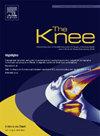Excellent long-term survivorship, radiologic and functional outcomes of operatively treated tibial plateau fractures
IF 1.6
4区 医学
Q3 ORTHOPEDICS
引用次数: 0
Abstract
Purpose
Long-term reports of operative tibial plateau fractures are scarce. This study aimed to define long-term knee survivorship with total knee arthroplasty (TKA) as the primary endpoint, assess radiographic and functional outcomes, and the relationship between reduction and functional outcomes.
Methods
Over 21 years, 170 patients were identified with operatively managed tibial plateau fractures treated by two orthopaedic trauma surgeons (109 unicondylar, 61 bicondylar). Survivorship analysis was performed to identify TKA conversion risk factors. Final follow-up radiographs were assessed for osteoarthritis severity, and clinical and functional outcomes were analyzed (KOS-ADLS, SF-12, and NRS-Pain).
Results
In unicondylar fractures, survivorship free of TKA was 93.6% (95% CI 88.7%–98.5%) at 10- and 15-years. Survivorship free of TKA for bicondylar fractures was 88.5% (95% CI 80.5%-96.5%) at 10-years and 84.3% (95% CI 73.1%–95.5%) at 15-years. Bicondylar involvement and non-anatomic reduction were independent risk factors for TKA (HR 2.7, HR 3.7; respectively). Bicondylar fractures demonstrated severe osteoarthritis more frequently than unicondylar (p = 0.043). At average 10-year follow-up (2–24 years), mean KOS-ADLS was 68.7 ± 12.5. Unicondylar patients had increased mean KOS-ADLS compared to bicondylar (71.4, 63.1, respectively; p = 0.005). Mean SF-12 was similar between groups.
Conclusion
Approximately 10% of operative tibial plateau fractures underwent TKA at 15-years; this rate approached 15% in bicondylar fractures. Bicondylar fractures had 2.7X higher TKA risk. In unicondylar fractures, non-anatomic reduction was associated with 3.7X higher TKA conversion risk. While both groups had similar SF-12 scores, bicondylar had significantly lower KOS-ADLS scores. Anatomic reduction is critical to prevent TKA conversion in unicondylar fractures.
手术治疗胫骨平台骨折的长期生存率、放射学和功能预后良好
目的手术治疗胫骨平台骨折的长期报道很少。本研究旨在确定以全膝关节置换术(TKA)为主要终点的长期膝关节生存,评估放射学和功能结果,以及复位和功能结果之间的关系。方法21年来,170例胫骨平台骨折经2位骨科创伤外科医生(单髁109例,双髁61例)手术治疗。进行生存分析以确定TKA转换的危险因素。最终随访x线片评估骨关节炎严重程度,并分析临床和功能结果(KOS-ADLS、SF-12和NRS-Pain)。结果在单髁骨折中,10年和15年无TKA生存率为93.6% (95% CI 88.7%-98.5%)。双髁骨折无TKA的10年生存率为88.5% (95% CI 80.5%-96.5%), 15年生存率为84.3% (95% CI 73.1%-95.5%)。双髁受累和非解剖性复位是TKA的独立危险因素(HR 2.7, HR 3.7;分别)。双髁骨折比单髁骨折更容易出现严重的骨关节炎(p = 0.043)。平均随访10年(2 ~ 24年),平均KOS-ADLS为68.7±12.5。与双髁患者相比,单髁患者的平均KOS-ADLS增加(分别为71.4、63.1;p = 0.005)。各组间SF-12平均值相似。结论约10%的胫骨平台骨折术后15年行全髋关节置换术;双髁骨折的这一比例接近15%。双髁骨折的TKA风险高出2.7倍。在单髁骨折中,非解剖性复位与3.7倍的TKA转换风险相关。虽然两组SF-12评分相似,但双髁的KOS-ADLS评分明显较低。解剖复位是防止单髁骨折TKA转换的关键。
本文章由计算机程序翻译,如有差异,请以英文原文为准。
求助全文
约1分钟内获得全文
求助全文
来源期刊

Knee
医学-外科
CiteScore
3.80
自引率
5.30%
发文量
171
审稿时长
6 months
期刊介绍:
The Knee is an international journal publishing studies on the clinical treatment and fundamental biomechanical characteristics of this joint. The aim of the journal is to provide a vehicle relevant to surgeons, biomedical engineers, imaging specialists, materials scientists, rehabilitation personnel and all those with an interest in the knee.
The topics covered include, but are not limited to:
• Anatomy, physiology, morphology and biochemistry;
• Biomechanical studies;
• Advances in the development of prosthetic, orthotic and augmentation devices;
• Imaging and diagnostic techniques;
• Pathology;
• Trauma;
• Surgery;
• Rehabilitation.
 求助内容:
求助内容: 应助结果提醒方式:
应助结果提醒方式:


